Defining Long-Toss

Recently, a third study was published on long-toss which brought to light some interesting data. Pitchers, PCs, and ATCs with five MLB teams completed an anonymous survey on personal use of long-toss and their perception of distance and throwing mechanics.
The results of this survey show that players, pitching coaches, and athletic trainers all define long-toss differently. This is a problem when you consider that discussing long-toss can be a controversial topic, with coaches often falling into the “love it” or “hate it” camps with little wriggle room. The fact is that there is a good chance many of these arguments are talking past one another.
As this study points out, very few people agree on a single definition of long-toss. This leads to the obvious question: what’s the point of arguing about two very different things?
This study pretty clearly hit problem on the nose (emphasis mine):
“Despite widespread use in baseball, the distances and long-toss throwing mechanics remain controversial. While long-toss throwing is generally accepted as part of injury rehabilitation, the timing of long-toss throwing, flat-ground throwing, and use of lower extremity footwork are highly variable. Two reported biomechanical studies of long-toss throwing used vastly different approaches to evaluate long-toss and consequently, little data are available on its goals.”
In reality, this or any discussion about long-toss is somewhat flawed because long-toss should change depending on what your goals are.
Are you…
- in a return-to-throwing program?
- on-ramping to throwing after time off?
- building velocity in the off-season?
- getting work in between starts in-season?
- warming up before a game in-season?
All of these are going to be different just like whether or not athletes throw on-a-line or use a crow-hop.
When Alan Jaeger says he wants athletes to “listen to [their] arm,” it really sounds a lot like autoregulated training. So when we’re talking about long-toss, what are we actually talking about?
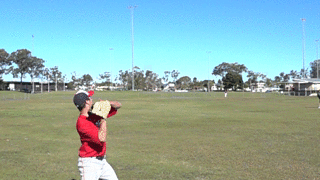
Defining Long-Toss: What the Study Says
Let’s look first into what the study shows us: 269 pitchers, 19 pitching coaches, and 31 athletic trainers replied to the survey. I’ve also provided a few questions for your own consideration as we look at these study results.
The mean distance for what all respondents considered as long-toss was 175 feet.
Is that a distance that you consider long toss?
Pitchers and pitching coaches (PCs) generally agreed on the distance of long-toss, which makes sense since most pitching coaches were at one point pitchers.
Of the participants, 36% reported long-toss as throwing “on a line” and 70% reported long-toss as “not on a line.” These add up to over 100% because pitchers were allowed to mark both options in the survey.
Do you consider long-toss with arc throws, on-a-line, or both?
Do you consider long-toss with or without a crow-hop?
Pitchers were also more likely to use long-toss for “a component of arm strengthening, conditioning, and recovery via stretching.”
ATCs considered long-toss throwing to be a part of an interval-throwing program. An interval-throwing program can be simplified to a scheduled-throwing program often used post injury to help a player return to previous levels. The number of throws and distance are often mapped out day by day for weeks until athletes can continue pre-injury workloads. Interval-throwing programs can also be used for athletes who are returning to throw after taking time off. Interval-throwing programs can be considered similar to on-ramping; the goal of both is to prepare for higher-workload safely.
While this study is a good look into pro ball, it isn’t a complete look. Remember that some teams are much more progressive with their throwing programs while others have organizational restrictions to 120 feet.
This, when thinking about it, seems odd considering a throw from home plate to second base is 127 feet. Nonetheless, it’s a rule that is sometimes implemented.
It should be made clear that long-toss in the general baseball community can be defined as anything from throwing 120 feet to 420 feet with arc or on a line, crow hop or not, and everything in between.
Rethinking the Long-Toss Research
There are two biomechanical studies on long-toss that are out right now. One came to the conclusion that long-tossing was more stressful than pitching while the other concluded that there were similar loads. But both studies only investigated long-toss that was “hard on-a-line.”
This is because, clearly, some athletes not only throw on a line but they also did so for reliability purposes. It’s more likely that throwing “hard on a line” results in athletes throwing very similar to one another. In contrast, if athletes were told to throw with arc, there would likely be a wider range of arcs, making it more difficult to compare athletes to one another.
Distance aside, the study we mentioned above reported that 70% of players consider long-toss “not on a line.” So clearly there is some interpretation that can be had here. It really comes down to the following question:
Do you believe that long-toss research on throwing on a line is the exact same as throwing with arc?
In truth, we just don’t know. Throwing at max distance, arc or no arc, is probably similar in stress or even more stressful than pitching. But there are most likely large differences between throwing on an arc and on a line at many distances.
Let’s take a brief look at some data on long-toss with the Motus sleeve and what it shows.
This data is available here, it was collected as a part of Driveline’s Open Data Project & comes from Dan Kopitzke of K-Zone Academy. This is only one athlete, but we look forward to continuing data collection this summer.
It becomes pretty clear that tossing a ball with lots of arc, at partial effort, is quite different than trying to throw a ball hard on a line.
This really leads to more questions, not answers, about how long-toss can best be used in a variety of circumstances.
As a reminder, long-toss as a year-round or programmed arm care has not been researched.
Comparing the arm stress of long-tossing “on a line” vs “not on a line” has not been researched.
Directly comparing restrictive 120-foot throwing programs to “long-toss” throwing programs has not been researched.
There is still a long way to go before we know anything concrete.
In-Season vs Off-Season Training
How you use long-toss in-season vs off-season is going to change because your goals change. It’s much more likely that an off-season long-toss program is being implemented for arm strengthening or conditioning purposes.
Some prefer to stay away from long-toss because they believe it’s too stressful. This would depend entirely on what the athlete or coach thinks about stress and training. If they believe that pitchers should push their stress levels and workload abilities in order to improve, then they are more likely to long-toss.
If the coach believes in “saving their bullets” or staying away from stressful training, then they’re more likely to keep long-toss out of their programs.
Many of the anti-long-toss arguments come from wanting to reduce stress in a number of ways: either reduce peak stress by restricting distance or by reducing overall stress by restricting volume and number of throws.
Long-tossing in-season would be considered as maintaining workload between starts, or warming-up before a game.
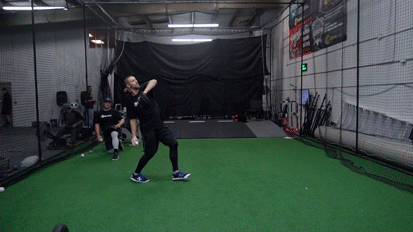
In this case, long-tossing before a game can often mean throwing as far as a pitcher feels comfortable before a start. This may change depending on a number of factors: last start, current weather, starting game time.
It seems like the argument isn’t entirely as simple as “you should long-toss” vs “you shouldn’t long”toss.”
Rather, it’s turned into the following: everyone should follow this one throwing program vs having athlete see what works best for them.
Coaching, Indoor Long-Toss, and Time Limits
One thing to be taken from discussing long-toss is that if you are going to commit to a long-toss program, especially in the off-season, then you need to make time in order to complete it. This might be one of the bigger hurdles for coaches and teams implementing long-toss programs.
In the fall and winter, pitchers need time and space. We understand that these two aren’t always available, but they should be made a priority if you are looking to include long-toss. A schedule should also be made, describing which days are considered just extension (arc throws), compression (hard on-a-line throws), or off days.
If you are stuck indoors in the winter but you have a cage that can be pulled down, then long-toss can be simulated by throwing into the net. Your athletes won’t have a opportunity to judge distance, but they will be able to judge effort and throwing angle.
In-season, the focus of long-toss often shifts from building arm strength to maintaining arm workload and warming up. The same rules do apply for in-season as they do for off-season. Time needs to be made in a practice schedule, pitchers need space, and a schedule should be made.
Weighted baseballs can also be used to start long-toss at any time of the year. This is especially helpful if it is cold out. Similar to a baseball the heavier weighted balls can be thrown at 50-75% RPE into the net to get a stretch.
We understand that there are times when circumstances outside a player’s or coach’s control can affect how a pitcher warms up. Weather and travel restrictions tend to be the two big problems that come to mind.
A couple workarounds to this include using tools such as j-bands or wrist weights, and Plyo Ball ® in a warm-up routine to aid throwing prep.
So, what is the definition of long-toss?
The definition of long-toss is going to vary from person to person, and that’s ok, because most athletes are going to long toss differently.
We encourage all of our athletes to long toss, but that looks slightly different depending on the day and the athlete.
Some like to do full extension with arc and compression throws before a bullpen. Others like to just use weighted balls to start throwing long toss and complete extension throws to tolerance.
Long-toss is a successful training tool because it can change to meet an athletes needs.
Encouraging long-toss often means letting a player figure out what type of long-toss works best for him.
How you define long-toss, then, is entirely dependent on how you want to use it.
This article was written by Associate Researcher Michael O’Connell
Long toss is a great way to strengthen your arm, but it’s not the only way. Learn more about how we strengthen our pitchers by reading the blog articles we have pertaining to strength.
Comment section
Add a Comment
You must be logged in to post a comment.
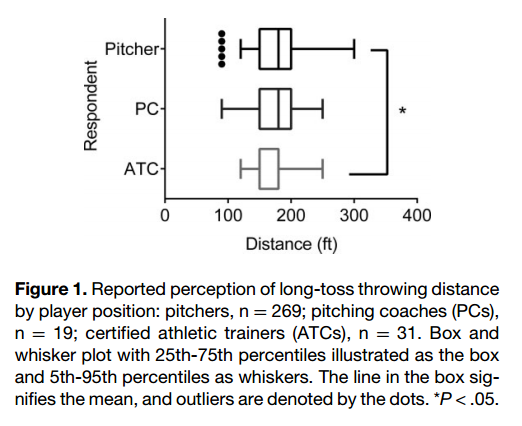
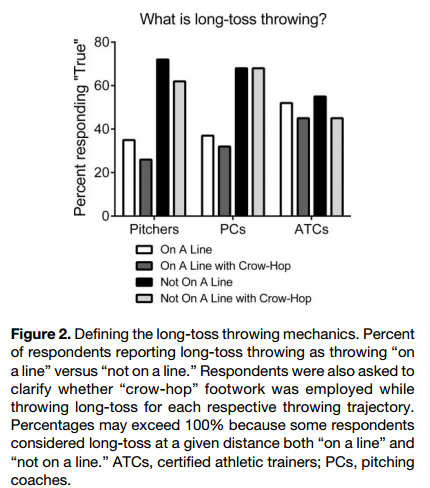
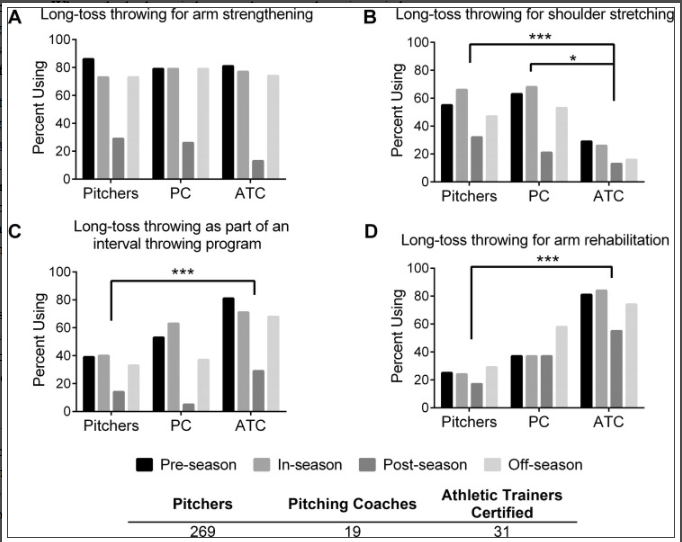
Greg Killingbeck -
Great article. Keep up the great work!
Pulldowns: The What, Why, and When - Driveline Baseball -
[…] long-toss routine, athletes would throw extension throws out to a certain distance. Then, depending on the day and schedule, as the two players got closer to one another, they would pulldown, throwing max effort […]
Is Long Toss with Weighted Baseballs Less Stressful on the Arm? - Driveline Baseball -
[…] 90-120-150 foot throwing program, an increasingly larger number of MLB organizations participate in so-called “extreme” long toss as their de facto throwing […]